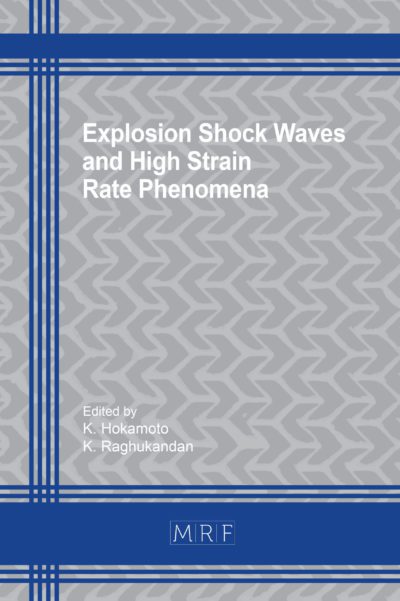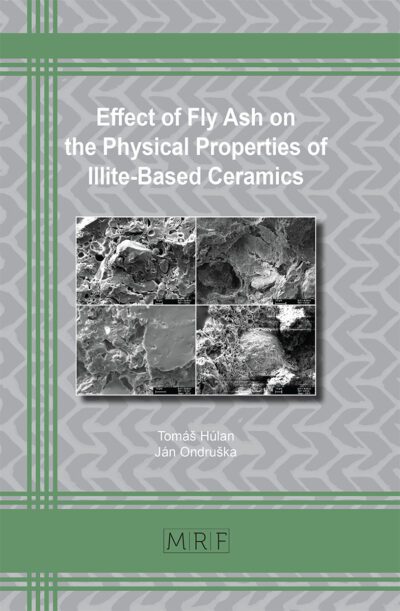2D FE modeling of the thermal history of the heat affected zone in AlSi10Mg LPBF
DELAHAYE Jocelyn, HABRAKEN Anne M., MERTENS Anne
download PDFAbstract. As an easily processable Al alloy, AlSi10Mg manufactured by Laser Powder Bed Fusion (LPBF) has received a lot of attention so far. However, it is well known that microstructural heterogeneities at the scale of the melt pool – in particular the weaker Heat Affected Zone whose microstructure evolves during the deposition of the next layer – exert a strong detrimental effect on the ductility of AlSi10Mg LPBF. In this work, a 2D Finite Element (FE) model is developed in order to tackle this issue and help in guiding the optimisation of LPBF process parameters. The model is calibrated using experimental measurements of the melt pool height. Furthermore, to allow for the efficient simulation of 5 successive layers, a remeshing procedure is implemented. No heat accumulation is observed during the deposition of these 5 layers. The thermal history of the HAZ can thus be studied with a thermal model for one layer.
Keywords
Aluminium Alloys, LPBF, Thermal History, Microstructure, Modeling
Published online 4/19/2023, 10 pages
Copyright © 2023 by the author(s)
Published under license by Materials Research Forum LLC., Millersville PA, USA
Citation: DELAHAYE Jocelyn, HABRAKEN Anne M., MERTENS Anne, 2D FE modeling of the thermal history of the heat affected zone in AlSi10Mg LPBF, Materials Research Proceedings, Vol. 28, pp 189-198, 2023
DOI: https://doi.org/10.21741/9781644902479-21
The article was published as article 21 of the book Material Forming
![]() Content from this work may be used under the terms of the Creative Commons Attribution 3.0 license. Any further distribution of this work must maintain attribution to the author(s) and the title of the work, journal citation and DOI.
Content from this work may be used under the terms of the Creative Commons Attribution 3.0 license. Any further distribution of this work must maintain attribution to the author(s) and the title of the work, journal citation and DOI.
References
[1] L. Thijs, K. Kempen, J.P. Kruth, J. van Humbeeck, Fine-structured aluminium products with controllable texture by selective laser melting of pre-alloyed AlSi10Mg, Acta Mater. 61 (2013) 1809-1819. https://doi.org/10.1016/j.actamat.2012.11.052
[2] E.O. Olakanmi, R.F. Cochrane, K.W. Dalgarno, A review on selective laser sintering/melting (SLS/SLM) of aluminium alloy powders: Processing, microstructure, and properties, Prog. Mater. Sci. 74 (2015) 401-477. https://doi.org/10.1016/j.pmatsci.2015.03.002
[3] A. Mertens, J. Delahaye, J. Lecomte-Beckers, Fusion-based additive manufacturing for processing aluminium alloys: state-of-the-art and challenges, Adv. Eng. Mater. 19 (2017) 1700003. https://doi.org/10.1002/adem.201700003
[4] ASM International (Hrsg.): ASM Handbook Volume 2: Properties and Selection: Nonferrous Alloys and Special-Purpose Materials, ASM International, 2004
[5] L. Roger, Fundamentals of aluminium metallurgy Production, processing and applications, Woodhead Publishing in materials: CRC Press, 2011.
[6] J. Delahaye, J.T. Tchuindjang, J. Lecomte-Beckers, O. Rigo, A.M. Habraken, A. Mertens, Influence of Si precipitates on fracture mechanisms of AlSi10Mg parts processed by Selective Laser Melting, Acta Mater. 175 (2019) 160-170. https://doi.org/10.1016/j.actamat.2019.06.013
[7] L. Zhao, J.G. Santos Macias, L. Ding, H. Idrissi, A. Simar, Damage mechanisms in selective laser melting AlSi10Mg under as-built and different post-treatment conditions, Mater. Sci. Eng. A 764 (2019) 138210. https://doi.org/10.1016/j.msea.2019.138210
[8] J. Delahaye, How to feed and validate a phase-field model predicting the evaluation of microstructures and properties in AlSi10Mg processed by Laser Powder Bed Fusion, PhD Thesis, University of Liège (Belgium), 2022. https://hdl.handle.net/2268/293324
[9] L. Zhao, L. Song, J.G. Santos Macías, Y. Zhu, M. Huang, A. Simar, Z. Li, Review on the correlation between microstructure and mechanical performance for laser powder bed fusion AlSi10Mg, Addit. Manuf. 56 (2022) 102914. https://doi.org/10.1016/j.addma.2022.102914
[10] A. Mertens, J. Delahaye, O. Dedry, B. Vertruyen, J.T. Tchuindjang, A.M. Habraken, Microstructure and properties of SLM AlSi10Mg: Understanding the influence of the local thermal history, Procedia Manuf. 47 (2020) 1089-1095. https://doi.org/10.1016/j.promfg.2020.04.121
[11] K.C. Mills, Recommended values of thermophysical properties for selected commercial alloys, Woodhead, Cambridge, 2002
[12] S. Cescotto, R. Charlier: Frictional contact finite elements based on mixed variational principles. Int. J. Numer. Methods Eng, 36 (1993) 1681-1701. https://doi.org/10.1002/nme.1620361005
[13] R. T. Jardin, V. Tuninetti, J. T. Tchuindjang, N. Hashemi, R. Carrus, A. Mertens, A. M. Habraken, Sensitivity analysis inthemodeling of a high-speed, steel, thin wall produced by directed energy deposition. Metals 10(11) (2020) 1554. https://doi.org/10.3390/met10111554
[14] S. Fetni, T. Maurizi Enrici, T. Niccolini, H. S. Tran, O. Dedry, L. Duchêne, A. Mertens, A. M. Habraken, Thermal model for the directed energy deposition of composite coatings of 316L stainless steel enriched with tungsten carbides, Materials & Design 204 (2021) 109661, https://doi.org/10.1016/j.matdes.2021.109661
[15] MSM & GEG (ULiege), 2022. Lagamine software [WWW Document]. Univ. Liege. URL https://www.lagamine.uliege.be/dokuwiki/doku.php (Accessed 4.12.22).
[16] M. Tang, P.C. Pistorius, S. Narra, J.L. Beuth, Rapid solidification: selective laser melting of AlSi10Mg, JOM 67 (2016) 960-966. https://doi.org/10.1007/s11837-015-1763-3
[17] I. Roberts, C.J. Wang, R. Esterlein, M. Stanford, D.J. Mynors, A three-dimensional finite element analysis of the temperature field during laser melting of metal powders in additive layer manufacturing, Int. J. Mach. Tools Manuf. 49 (2009) 916-923. https://doi.org/10.1016/j.ijmachtools.2009.07.004
[18] Y. Liu, J. Zhang, Z. Pang, Numerical and experimental investigation into the subsequent thermal cycling during selective laser melting of multi-layer 316L stainless steel, Opt. Laser Technol. 98 (2018) 23-32. https://doi.org/10.1016/j.optlastec.2017.07.034













